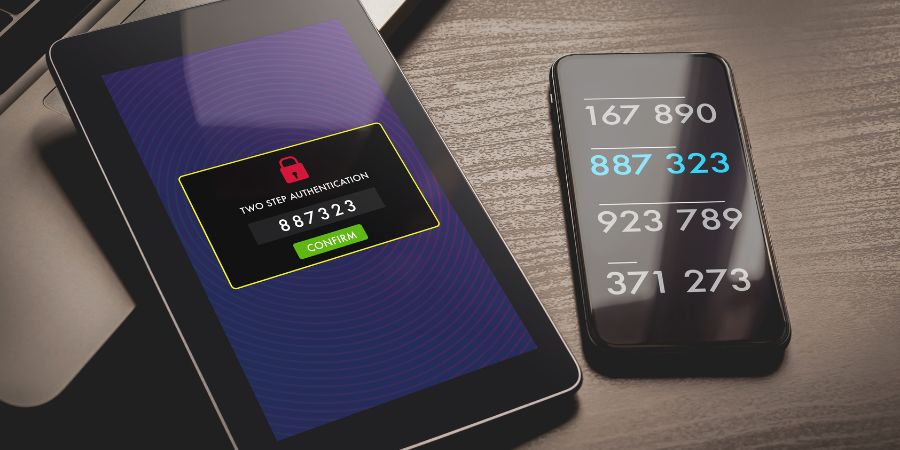How to Keep Your Business Safe with New Phishing Trends
Phishing is a type of cyber-attack that tricks users into giving up private information such as login details, credit card numbers, or social security numbers. These attacks are made possible because users are often tricked with emails that appear to come from a trusted source but in fact have malicious links or attachments.
Operating a business online in today’s world means you need to take precautions, so your private information stays safe and secure. The last thing you want is for hackers to gain access to some of your company’s most sensitive information.
As a small business owner, there are many security risks you should be aware of in order to prevent against them. We know how stressful it can be when the threat of phishing attacks lurks around every corner. However, we also understand that being aware of these dangers also helps reduce their likelihood of happening to you!
In this article, we’re going to go over some of the most recent and effective ways on how to keep your business safe with new phishing trends. If you need help with securing your data, please do not be afraid to reach out to us here at AST Cybersecurity. We will be glad to help in any way we can.
What Is Phishing Exactly?
Phishing is a type of cyber-attack that often appears as an email and appears to be from a legit source. However, there is malicious code, attachments with downloads in them, or they go to fake websites that are nearly identical to the real ones.
If you click on any link or attachment, a discreet download often begins. If you go to the website and input any information, the hacker on the other end gains access to that information to use as they please.
Phishing emails often look like they’re from a legitimate company such as your bank, credit card company, or even your utility provider. They may ask you to verify your password still works after a system update or even tell you that your bank account was hacked. These scammers typically use the logos of these companies as a way to trick customers into believing that their emails are real.

Common Signs of Phishing Emails
A general rule of thumb is to never click on links in an email from someone you don’t know. If the sender is someone you know, you can always call them or open up a new browser window to type in the website yourself. This way, you can avoid clicking a malicious link or downloading a virus to your computer.
Here are some other signs to look out for that might indicate an email is a phishing scam.
- Poorly written or unprofessional emails: Scammers don’t care about their reputation; they want your information no matter what. If the email is unprofessional or poorly written, it could be a sign that it’s a phishing scam.
- Strange urgency: Scammers want to get your information as quickly as possible. If the sender is asking for your information urgently, it’s a red flag that it could be a phishing scam. The goal is to get you to act now, and think later.
- Overly confident language: Scammers want you to click their links as soon as possible. They know that the more time you have to think about whether their email is real, the less likely you’ll be to respond.
Be Careful of Emails from Unknown Sources
In today’s technological landscape, it can be hard to tell who is real and who isn’t. Many phishing scams are able to fool even the savviest of internet users sometimes. If you receive an email from a source you don’t recognize, it can often be a good idea to call the company in question to see if they actually sent the email.
Even if the email appears to come from a legitimate source, it’s important to be wary when clicking on links and downloading attachments from emails you aren’t familiar with. If you work in an office setting, it’s also important to inform your employees about this common phishing scam.
Many phishing scams will attempt to trick a company’s employees into sending out emails to their clients or customers requesting sensitive data, such as login credentials, social security numbers, credit card numbers, etc. If you receive an email from a source you don’t recognize, it’s best not to respond to the email but instead to report it to your IT department or manager.
Always Look for Verification Marks
Verification marks, such as the words “secure” or “https” at the beginning of a website URL, signify that the site is likely authentic and that your information is being sent through a secure connection. If you’re unsure whether or not to visit a website, always look for these verification marks.
Websites that lack these marks have a higher chance of being a fraudulent phishing site. It’s important to note that the absence of a verification mark doesn’t necessarily mean a site is a phishing site.
However, it’s a good idea to be mindful of this when visiting a new website. If you have any doubts about a site’s authenticity, it’s best to avoid entering any sensitive information.

Use Two-Step Verification
If your email provider offers two-step verification or two-factor authentication, make sure to enable it right away. Two-step verification is a security feature that requires you to input a special code that is sent to your phone in addition to your login information.
This way, even if someone were to obtain your login information, they wouldn’t be able to log into your account because they wouldn’t have access to your phone. Be sure to choose an email provider that you can trust.
Don’t Overload Your Employees with Information
As a business owner, it can be tempting to try and overcompensate for potential phishing attacks by giving your employees a lengthy, detailed list of what to look out for. However, it’s important not to overload your employees with information.
If your employees have too many things to remember, they are much more likely to make mistakes—or worse, ignore important information completely! Instead of giving your employees too much to remember, it’s better to give them a few main points to remember.
Use a simple acronym, such as S.A.F.E., to remind your employees to be wary of suspicious emails from unknown sources and emails that don’t look like they came from a trusted source.
AST Cybersecurity Can Help Keep You Safer from Phishing Email Threats
Phishing is a common cyber-attack that has plagued people and businesses for many years. No matter how many people are aware of these dangers, scammers will continue to come up with creative ideas to trick people into giving up their sensitive information.
For businesses, phishing attacks can cause a great deal of harm. Not only can they be extremely frustrating to deal with, but they can also lead to identity theft and financial loss. To keep your business safe, make sure to be aware of these phishing trends and take precautions to protect your sensitive information.
For help keeping your cybersecurity at the top level for your business, contact AST Cybersecurity today. We can help guide your cybersecurity efforts to keep your business safer from online threats like phishing emails and more!

